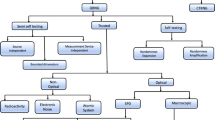Abstract
Converting random bits into random numbers is necessary for cryptographic protocols such as key agreements, public key encryptions, digital signatures and so on. In this paper, we propose the simple partial discard method and the complex partial discard method that convert random bits into random numbers. They are up to two times more efficient than standardized techniques.






Similar content being viewed by others
Notes
We developed the SPDM and the CDPM before Lumbroso published the FDR on arXiv.
The reference code given in [7] is not optimal. Thus we optimized it.
References
ANSI (1997) Public key cryptography using irreversible algorithms—part 1: the digital signature algorithm (DSA), ANSI X9.30-1
ANSI (2006) Random number generation part 1: overview and basic principles, ANSI X9.82-1
Bleichenbacher D (2000) On the generation of one-time keys in DL signature schemes. In: Presentation at IEEE P1363 working group meeting
Horibe Y (1981) Entropy and an optimal random number transformations. IEEE Trans Inf Theory 27:527–529
ISO/IEC (2011) Information technology: security techniques—random bit generation, ISO/IEC 18031
Knuth DE, Yao AC (1976) The complexity of nonuniform random number generation. Algorithms Complex 357–428
Lumbroso J (2013) Optimal discrete uniform generation from coin flips, and applications, arXiv:1304.1916 [cs.DS] (2013).
NIST (2012) Recommendation for random number generation using deterministic random bit generators, NIST Special Publication 800–90A
NIST (2013) Digital Signature Standard (DSS), FIPS 186–4
Shoup V (2010) NTL: a library for doing number theory. http://shoup.net/ntl/
Author information
Authors and Affiliations
Corresponding author
Rights and permissions
About this article
Cite this article
Koo, B., Roh, D. & Kwon, D. Converting random bits into random numbers. J Supercomput 70, 236–246 (2014). https://doi.org/10.1007/s11227-014-1202-1
Published:
Issue Date:
DOI: https://doi.org/10.1007/s11227-014-1202-1




